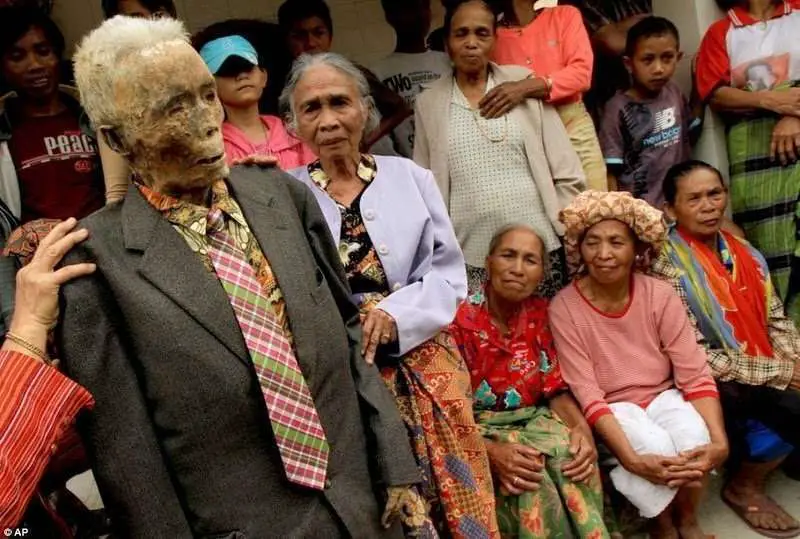Table of Contents
Peculiar Burial Rituals of Tana Toraja
The Toraja are a group of people from Indonesia who live in South Sulawesi, which is a beautiful mountainous area. Tana Toraja, also known as “the Land of the Toraja,” is a province in the middle of the island of Sulawesi. It is 300 km north of Makassar, the provincial capital of South Sulawesi, and is home to many of its people. People who believe that all non-human things, like animals, plants, and even things that aren’t alive, have a spiritual essence have come up with some of the most elaborate funeral rites in the world. These include tree burials for infants who died before they had teeth, and the parade of mummies who died a long time ago.
Toraja burial rituals are important social events and occasions for the entire family to come together and for villagers to participate in communal events, renewing relationships and reaffirming beliefs and traditions in the way of the ancestors, as they did when they were alive. For several days, these events happen.
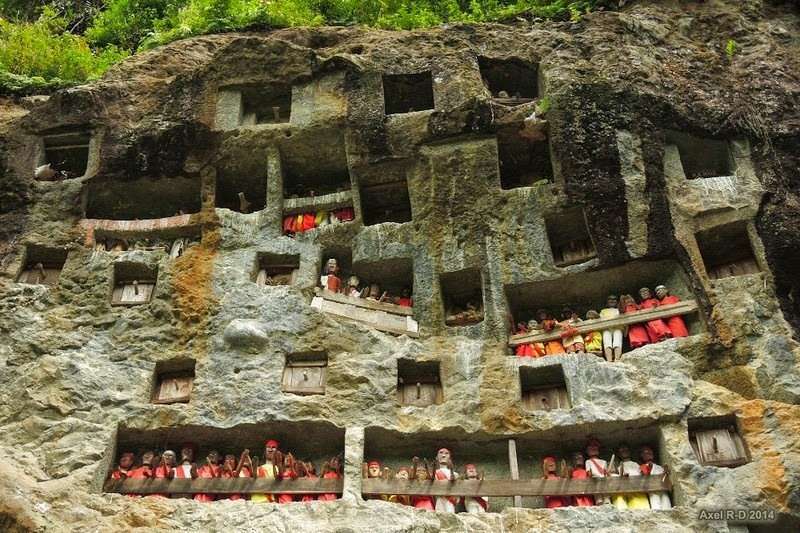
When a Torajan dies, the dead person’s family must hold a series of funeral ceremonies, called Rambu Soloq, over many days. These ceremonies are called Rambu Soloq. But the ceremonies don’t start right away after someone dies, because many Toraja families don’t have the money to pay for funeral costs. So they wait for weeks, months, or even years, slowly raising money until enough money has been saved. They do this until enough money has been saved. During this time, the dead person is not buried but is embalmed and kept in a traditional house with his or her family under one roof. Until the funeral is over, the person isn’t really dead, but is just sick and in pain.
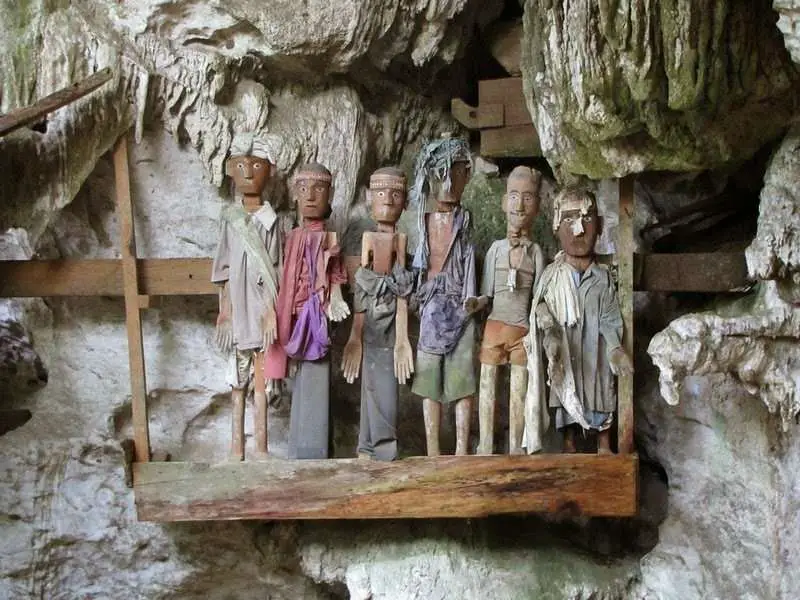
In the end, when enough money has been raised, the ceremonies can start. First, young boys dance and play music while slaughtering buffaloes and pigs. Then, they catch the blood that comes out of them in long bamboo tubes. During the death feast, the more buffalo are killed. In many cases, a lot of buffalo and a lot of pigs are killed for sacrifice. After the sacrifice, the meat is given to the people who came to the party.
They then have to be buried, but members of the Toraja tribe are not very likely to be buried in the ground. Caves are either dug into the rock side of a mountain, or wooden coffins are hung from a cliff. People usually have to spend a lot of money to build a grave. A wood-carved effigy, called Tau tau, is usually placed in the cave and looks out over the land. The coffins are beautiful, but over time, the wood rots, and the bones of the deceased often fall to the bottom of the suspended burial ground because they have been bleached.
Burial Rituals for Babies are Differ
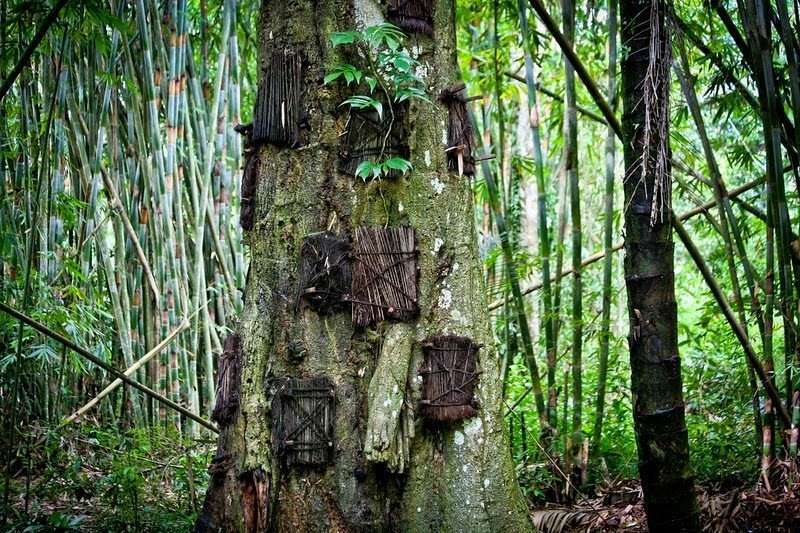
Baby’s aren’t buried in caves or hanged from cliffs. Instead, they are buried inside the hollow of living trees. Wrapped in cloth, the baby is put inside a hollowed-out space inside a growing tree trunk. A door made of palm fiber is then put over it. The hole is then filled in, and as the tree starts to heal, the child is thought to be taken in. Dozens of babies could be buried in the same tree.
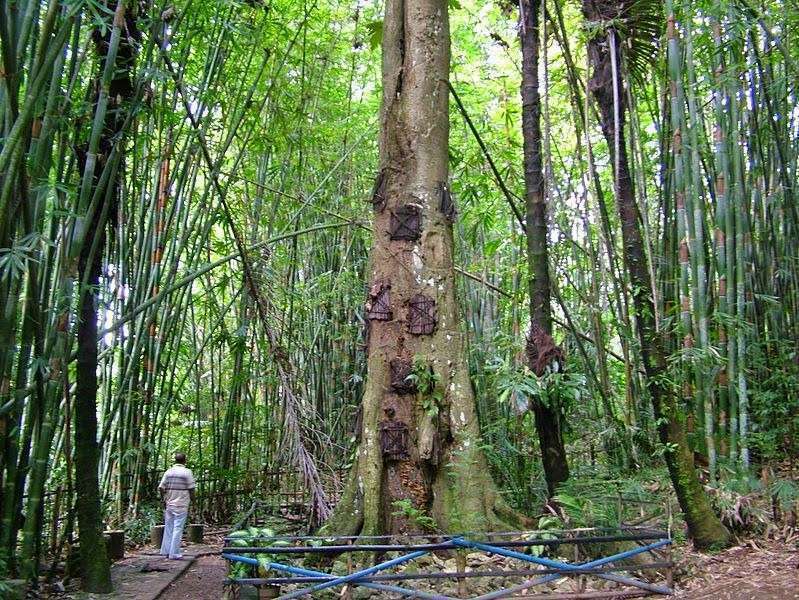
The burials are done, the guests have eaten and gone home, but the rituals aren’t over yet. Rituals called Ma’Nene take place about once a few years and take place in August. The bodies of the deceased are taken out of the ground and cleaned, groomed, and dressed in new clothes. Then, the mummies are walked around the village as if they were dead.
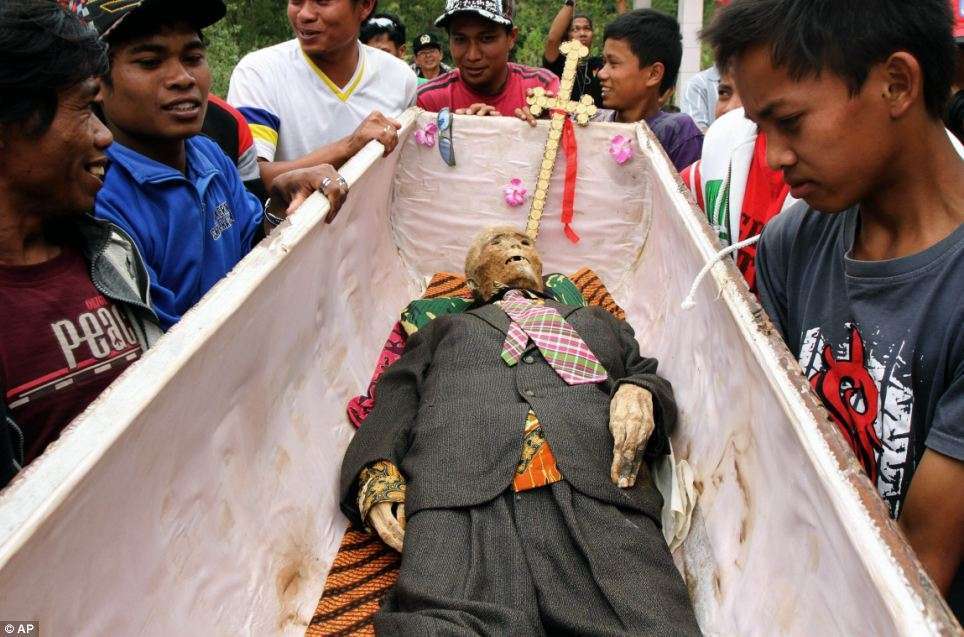
Tourists and anthropologists from all over the world come to Tana Toraja every year because of its unique burial rituals about the dead. Indeed, since 1984, Tana Toraja has been named the second most popular tourist destination in Indonesia after Bali by the Ministry of Tourism. This has given the Toraja a celebrity status in Indonesia and made the Toraja ethnic group more proud of itself. Most of them are talking proudly about their burial rituals.
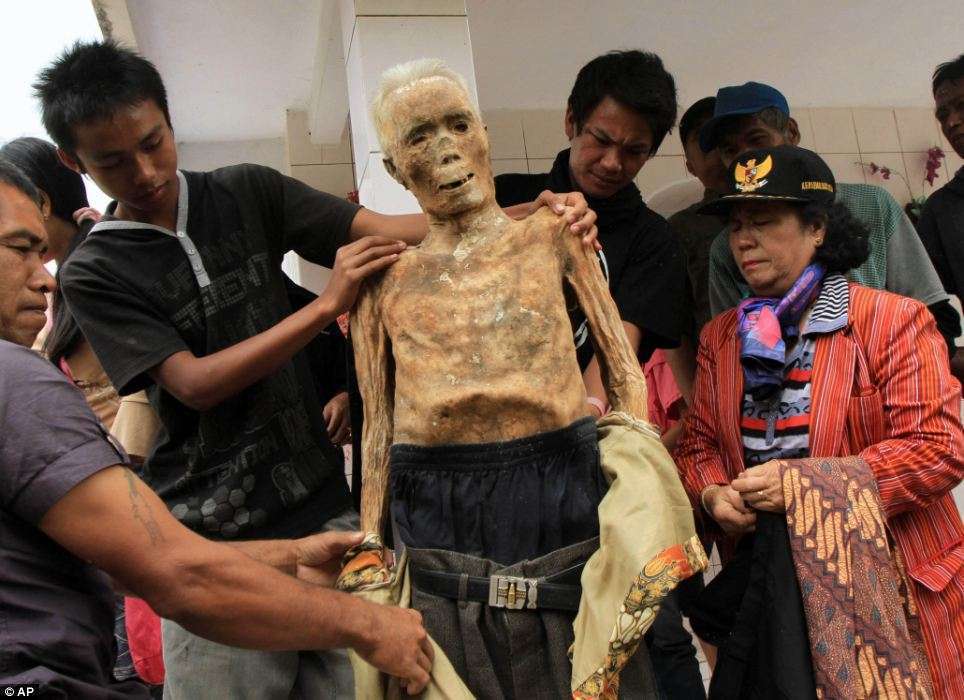
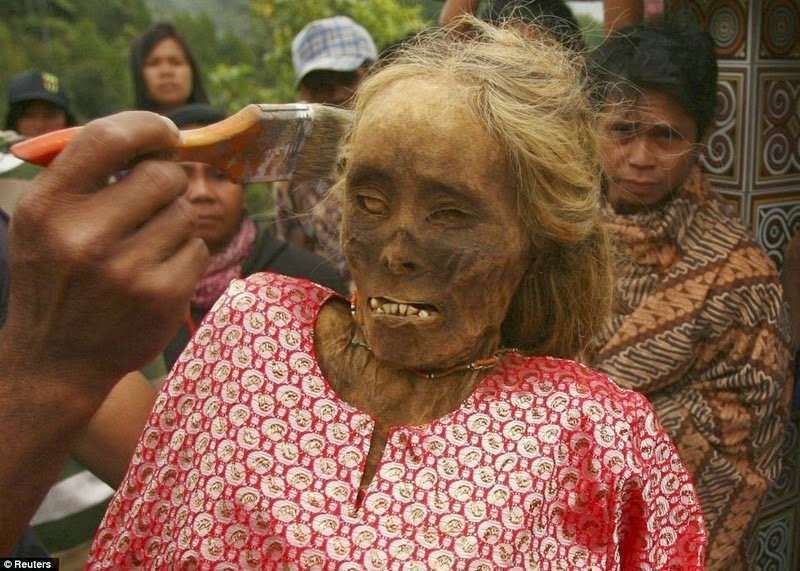
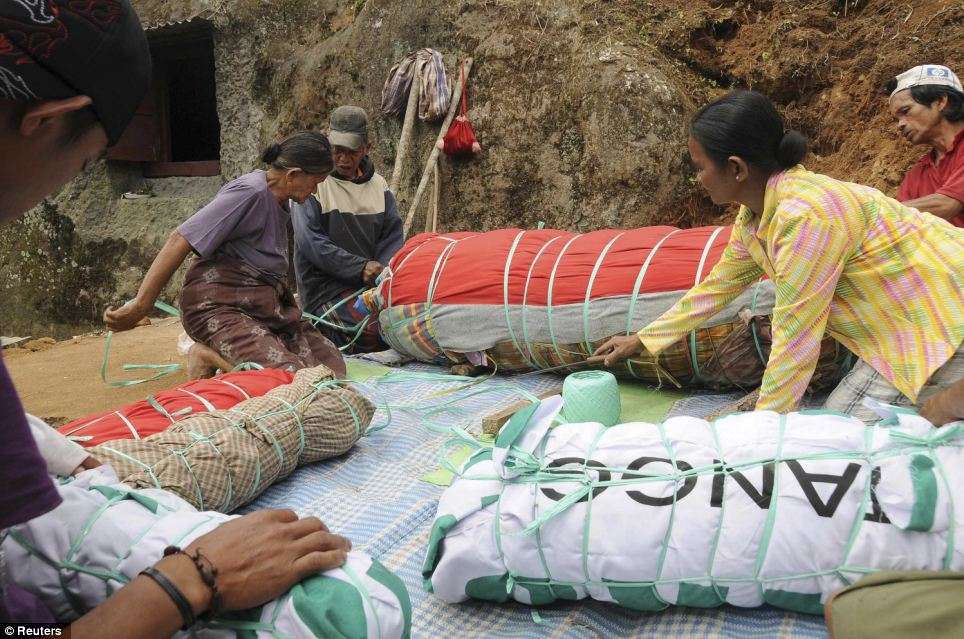
Source DailyMail | DM for any removal please

